Spatial
Jasmax 85 Durham Lane Supergraphics
-
Pou Auaha / Creative Directors
Clem Devine, Claire O'Shaughnessy
-
Ngā Kaimahi / Team Members
Aaron Troy, Mike Thomas, Grace Mirams -
Kaitautoko / Contributors
Fulton Hogan, Complete Traffic Services, Daniel Du Bern -
Client
Tauranga City Council

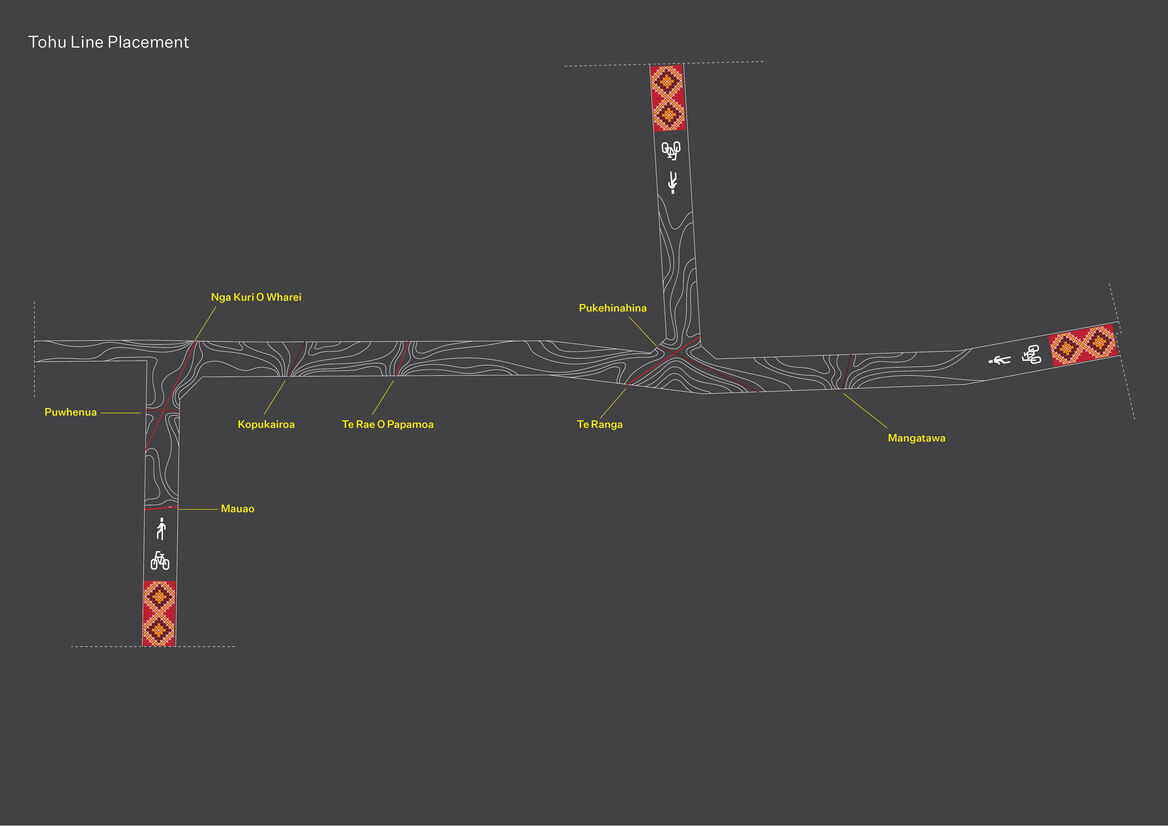
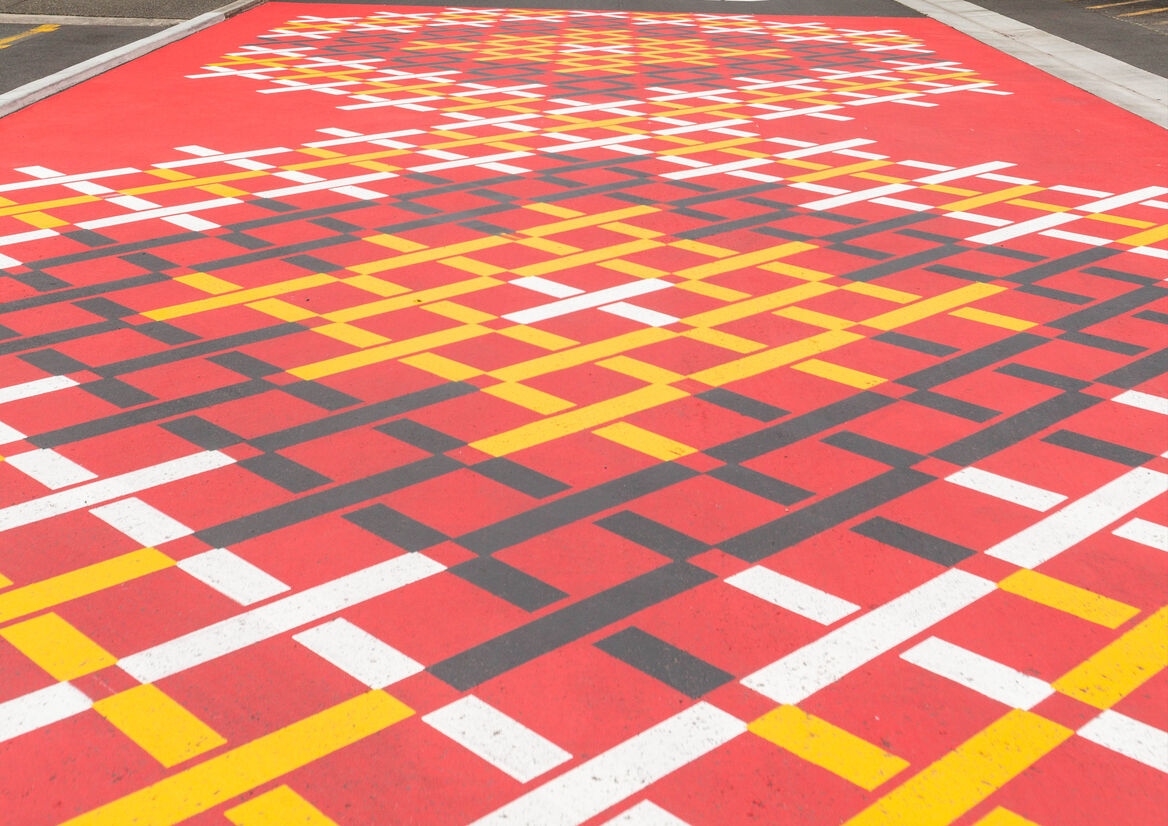

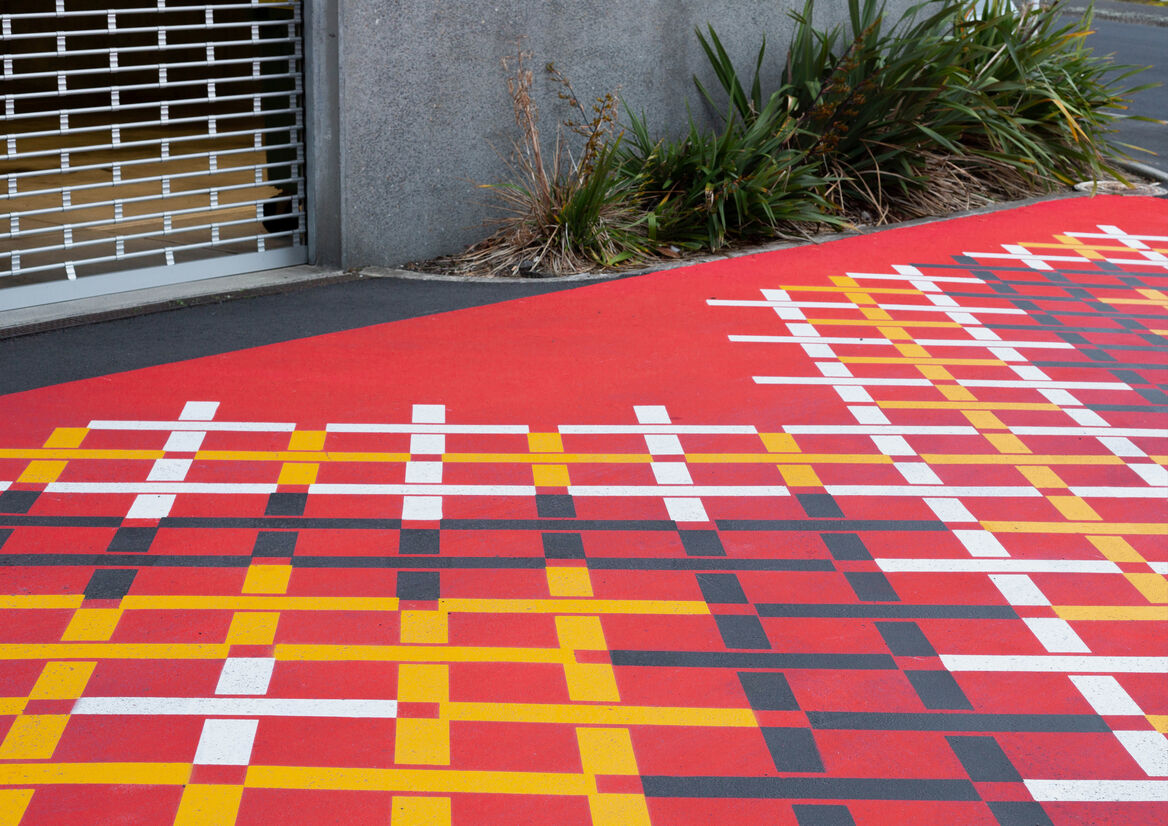

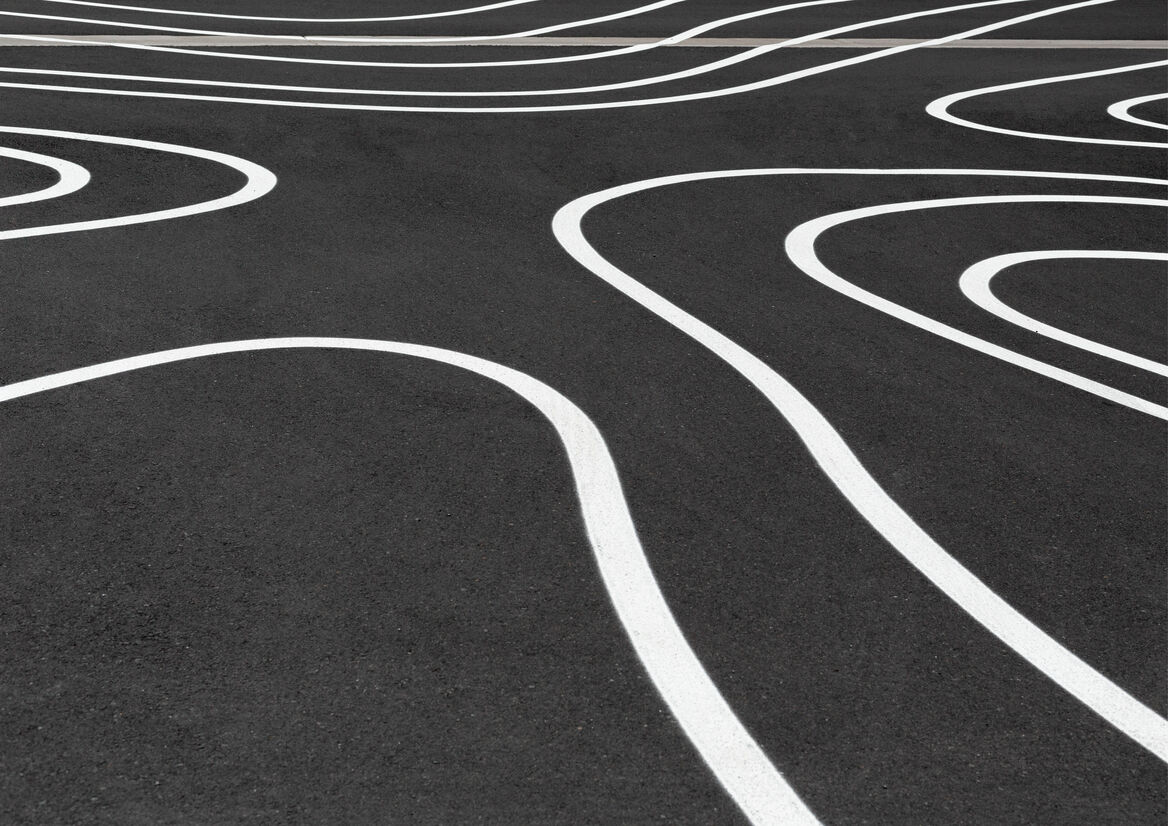
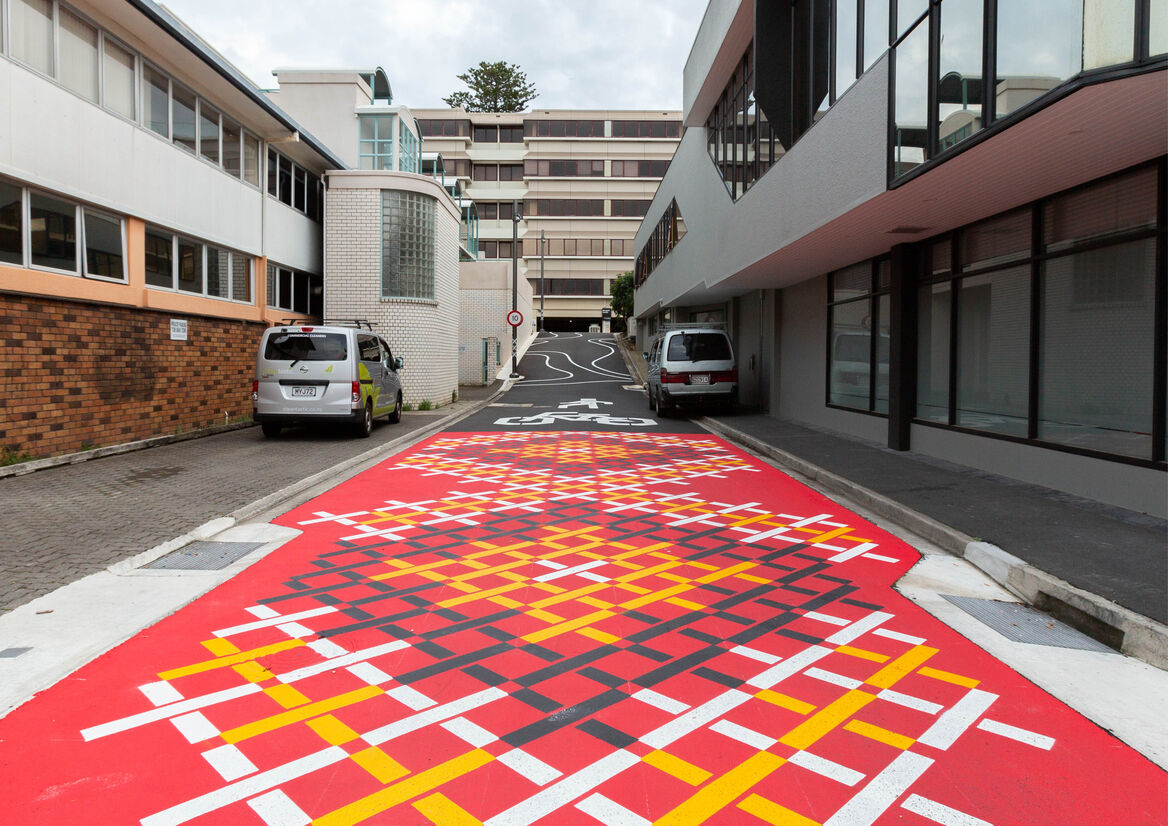
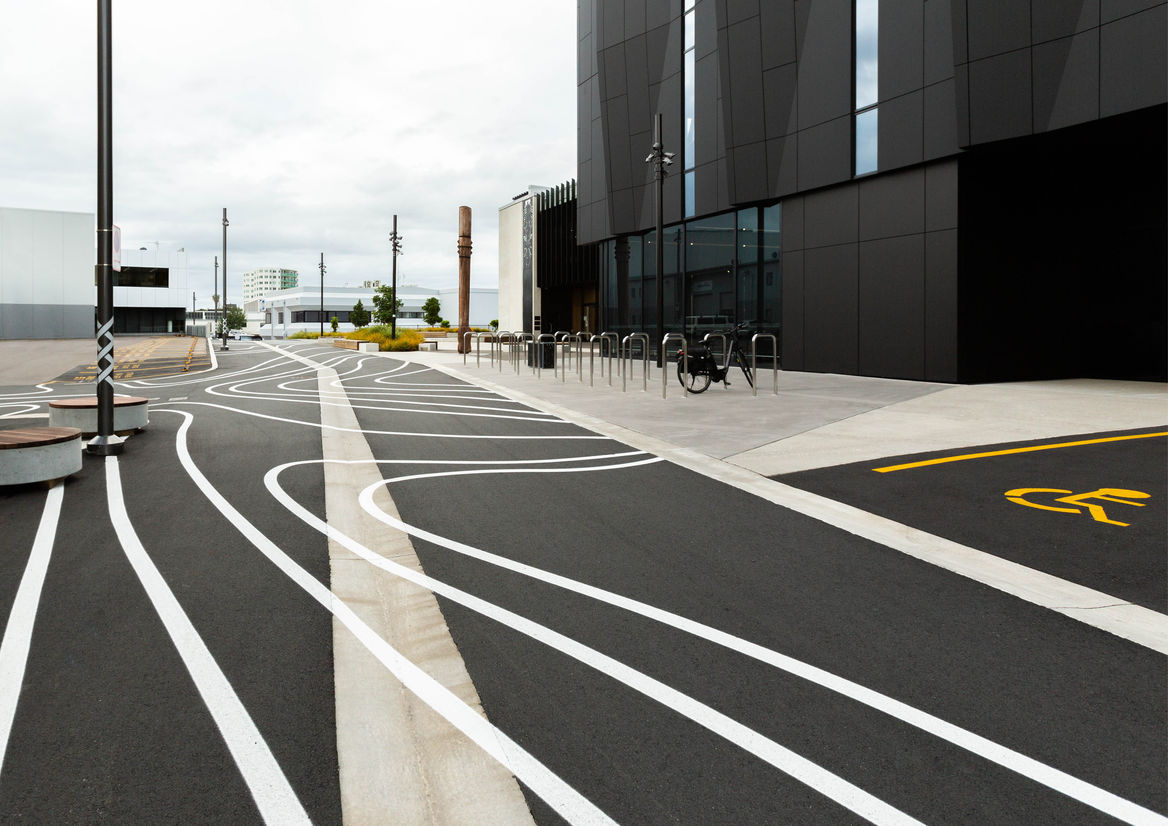
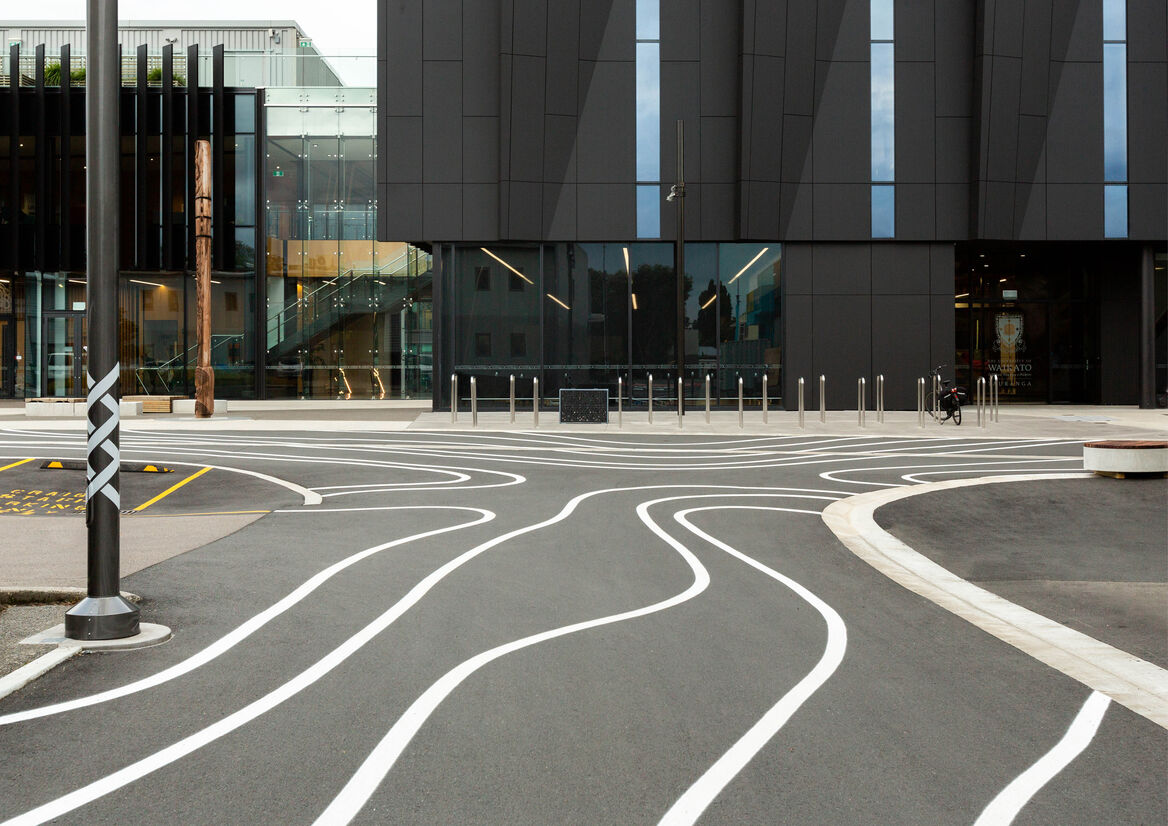
Description:
The Durham Lane landscaping project is an interim design solution put in place prior to the upcoming streetscape revitalisation project surrounding the recently built University of Waikato Tauranga campus, connecting the university building to the surrounding city centre.
The Supergraphics tell a story of 'place' by using Te Ao Māori interpretive design paired with Tohu (lines of acknowledgement pointing towards places of significance).
Common road marking processes are used to exaggerate the visual language of the streetscape, creating a space of exploration and surprise while embracing the 'visual grit' of the lane. The large scale surface markings act as a tool to differentiate Durham Lane from neighbouring roads and to slow traffic, encouraging safe shared spaces for pedestrians and cyclists.
The Visual Language of a Street
The supergraphic visual system is based on what users see everyday, creating an opportunity to develop a unique visual identity for Durham Lane that doesn't feel out of place. This system allows the use of existing materials and processes ensuring a low-cost solution to be realised.
Entrance Thresholds
A bold and expressive use of colour at the entrances is used to slow traffic and offers an introduction to the story being told throughout the lane.
The thresholds are based on indigenous Māori pātiki and tukutuku patterns interpreted into the streetscape using a road-marking stencil system to create an engaging and non-slip surface.
The colours chosen are ones that a commonly used in road marking - ensuring the project is cost effective while also speaking to colours used in traditional tukutuku designs.
Topographic or 'Tohu' Lines
The topographic lines react to the direction of the tohu (lines of acknowledgement). They visualise a journey and speak to important landmarks for local iwi and for users to recognise their own journey, becoming more in tune with their surroundings.
The artwork is designed to reduce cars entering the lane, giving more space for pedestrians and bikers.
The scope of the project involved mapping the artwork onto the streetscape and providing detailed drawings to the contractors to create the stencil system and install the graphics.
Photography by Daniel Du Bern